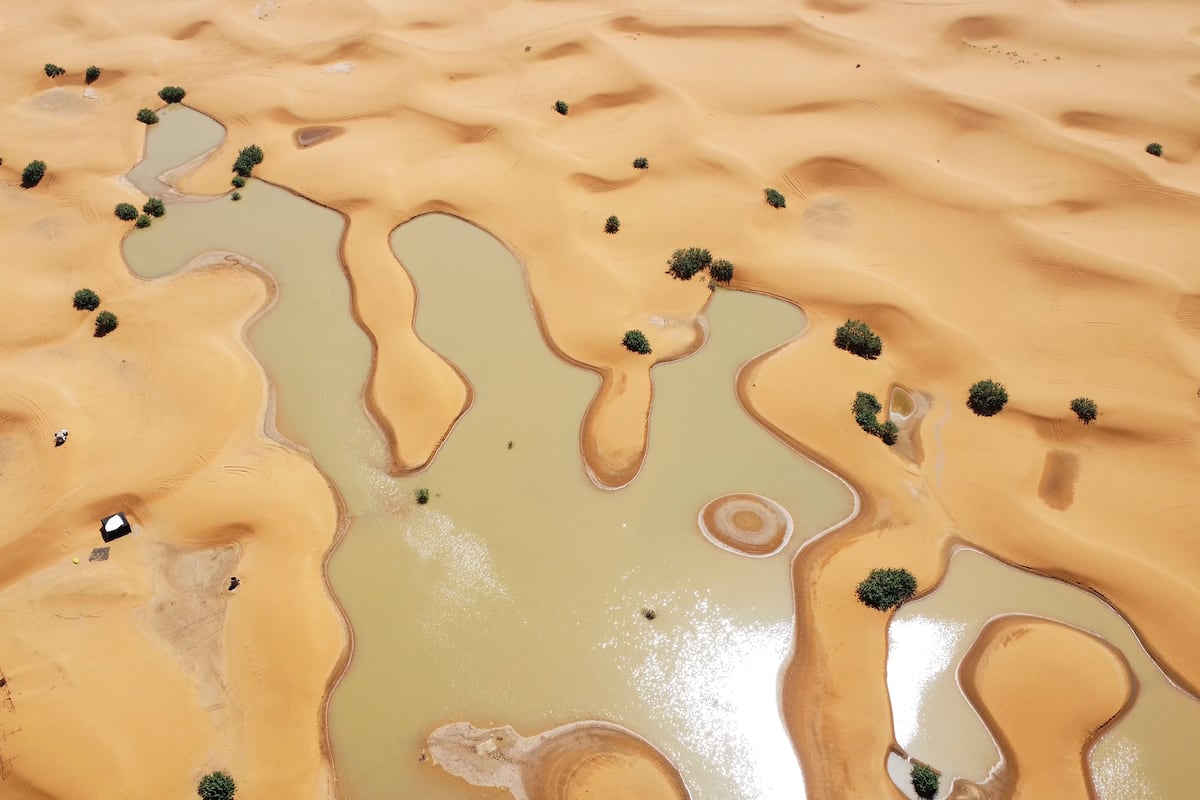Morocco’s desert floods for the first time in more than half a century. climate and environment

The oldest nomads of Zagora and Merzouga in Morocco’s desert southeast do not remember seeing extensive lagoons and streams running between the dunes in more than half a century. A brand new accumulation of water that has emerged in recent weeks has surprised tourists visiting one of the most frequented tourist destinations in the Maghreb country. Persistent storms of extraordinary rain in late summer and early autumn have led to this unusual phenomenon without recent precedent, which has transformed the landscape of the Sahara.
The relief of these areas has facilitated the retention of water in ravines and valleys and the resurgence of lakes such as those in Iriki National Park, which had dried up decades ago. After the rainy season in the first half of September, images taken by NASA’s Terra satellite from the European Copernicus program and the MODIS system from the Sentinel 2 satellite confirmed the regeneration of wetlands of high ecological value on the migratory route of flamingos and other aquatic species. .
“The last time it had water was in 1968,” Adel Munan, a researcher at the University of Kenitra, was quoted as saying by Efe agency. Lake Iriki is now 13 kilometers long and 11 kilometers wide. “An entire ecosystem has regenerated,” celebrates Mumman, looking forward to the return of migratory birds and the reappearance of crustaceans like Triops, considered one of the oldest living species on the planet, whose The eggs survive for decades in dry environments.
“There is a doubt in my mind whether everything was one of the classic mirages that occur in desert areas,” a Spanish traveler said in late September after posting some of the first images of Moroccan desert lagoons. National Geographic. In southern areas of Morocco, rainfall of up to 250 liters per square meter has been recorded in one or two days, which is equivalent to the average annual rainfall of the region. “This has never been seen before,” Hussein Ouabed, spokesman for Morocco’s Meteorological Directorate General, told digital news portal Hespress. “These precipitation threaten to change the region’s climate by increasing air humidity and water evaporation,” he warned. Despite flooding in the south of the country last month, the national average of water reserves in swamps stood at only 29% of their maximum capacity on Tuesday after more than six years of drought.
In late September intense rainfall was repeated over large areas of the south and east of the country. At least 10 people died and seven others were reported missing. The storm’s first wave killed 18 people, including a Spanish national traveling in a convoy of tourist SUVs who was swept away by floods while crossing a ferry. Last weekend, water logging facilities at the international airport of Morocco, Morocco’s main tourist destination, forced many flights to be diverted to other airfields. Warnings of torrential rain continued in many areas of the Maghreb country this Wednesday.
Know the pulse of the planet in every news, do not miss a thing.
keep reading
According to the Moroccan Directorate General of Meteorology, the storm was caused by an “extremely unstable tropical air mass, due to the exceptional position of the inter-tropical front to the south”. “The humid tropical air mass moved northward, encountering a cooler air mass, resulting in the formation of unstable and violent clouds,” the official agency said.
The floods there have had a devastating impact on Morocco. According to the Association to Fight, oases and water levels act as natural regulators of water reserves, but the balance changes due to the construction of reservoirs and large-scale withdrawals from wells to supply extensive agriculture due to prolonged periods without rain. Has come. Erosion, drought and desertification in Morocco. Many houses are built along rivers, whose channels are almost always dry, with the belief that water will never flow through them again. Many cities have also been established in narrow valleys.
The areas of Al Hawz and Taroudant, located in the Atlas, where an earthquake struck a year ago that killed nearly 3,000 people, have also been affected by recent flooding. Thousands of people are still living in tents even after about 60,000 houses were destroyed by the earthquake.
(TagstoTranslate)Environment(T)Society(T)Morocco(T)Sahara(T)Desert(T)Floods(T)Climate change(T)Wetlands(T)Waterbirds